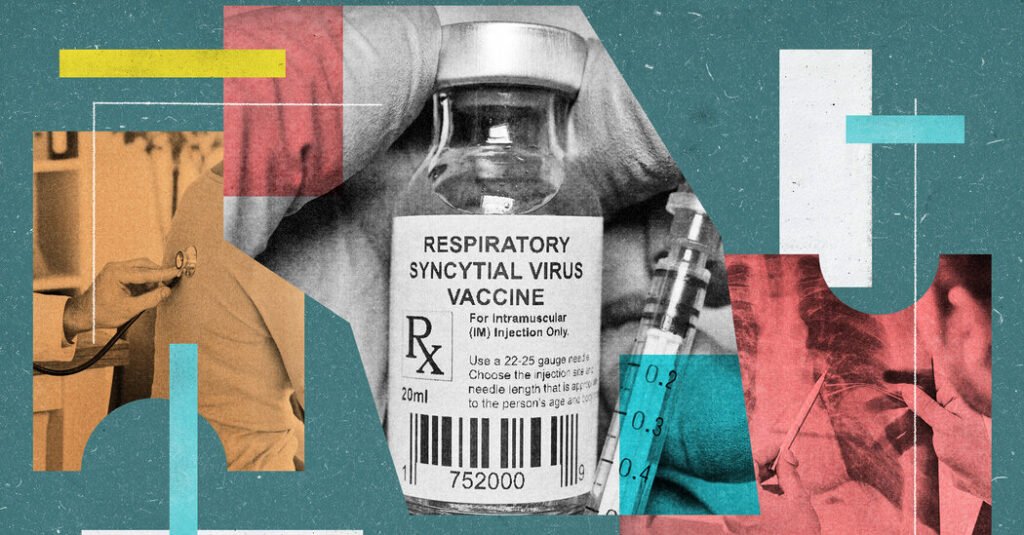When the Food and Drug Administration approved several new vaccines against respiratory syncytial virus last year, they were hailed as “powerful new tools” to protect infants and the elderly. Big drug companies projected sales in the billions of dollars, assuming that most of the target population would actively participate.
But despite all the expectations, relatively few people sought the vaccine. Only about 24 percent of eligible seniors were vaccinated last season. This is a disappointing response, which one expert said is largely due to vaccine fatigue, cost and confusion about who should be vaccinated.
But this season will be different. Pharmaceutical companies have ramped up production of infant treatments that were in short supply last year, and more insurance companies are starting to cover RSV shots. But experts say there are still challenges to overcome to increase vaccination rates, including reinforcing public health messages and increasing public understanding of how serious the virus is for certain groups. He said there are hurdles to overcome.
RSV risk
Most people infected with RSV experience only mild symptoms, such as a runny nose and cough. However, RSV attacks can be serious for infants and older adults, especially those with weakened immune systems or chronic illnesses such as heart or lung disease.
According to the Centers for Disease Control and Prevention, RSV causes up to 160,000 hospitalizations and 10,000 deaths among older adults each year in the United States.
This virus is the leading cause of hospitalization in infants during the first year of life. Babies infected with RSV can develop pneumonia and often require treatment with oxygen, IV fluids, and a ventilator to help them breathe. This virus can also be dangerous to some young children, and 100 to 300 children under the age of 5 die from RSV each year.
The new shot could protect these high-risk groups. These include one-time vaccines for older adults and maternal vaccines given in the third trimester of pregnancy to pass immunity to the newborn. Antibody shots are also available for infants younger than 8 months who were not protected by their mother’s vaccines, or for infants 8 to 19 months of age who are at high risk for serious infections.
Overcoming last season’s obstacles
The CDC said last season that people 60 and older can receive the RSV vaccine, but they should first talk to their doctor about whether to get it. Experts say the guidance has created confusion about how much vaccine is needed and for whom. Price was also a barrier. Because the vaccine is new, it’s not yet covered by many insurance plans, which could cost patients up to $300.
Physicians and pharmacists told the CDC that government guidance makes it difficult to recommend expensive new vaccines to older patients without clear necessity.
“What they want is, ‘Just tell me to give it or not to give it.’ Take it easy,” said Dr. William Schaffner, a professor of infectious diseases at Vanderbilt University Medical Center who works with the CDC’s Vaccine Advisory Committee. spoke.
This season, the agency clarified its guidance. All people over 75 should be vaccinated, as should people over 60 with certain serious chronic conditions and people living in nursing homes.
“If you’re in poor health and older, it’s time to spend that penny,” said Dr. Camille Cotton, an infectious disease expert at Massachusetts General Hospital and a member of the CDC’s vaccine advisory committee. said. Medicare, Medicaid, and private insurance companies are now required to pay for vaccinations for eligible groups.
Experts also hope that problems that have affected intake by pregnant women and infants will be resolved.
Dr. Brenna Hughes, an obstetrician at Duke University Hospital, said many of her pregnant patients last season were interested in getting the vaccine. However, at a cost of about $300 per dose and because insurance companies were not yet required to cover it, it was out of reach for many people.
“It was essentially impossible for them to access this vaccine,” she said. Just under a third of eligible pregnant women were vaccinated last season, according to data released this week by the CDC.
There was also great demand for the infant antibody drug nilsevimab. But treatments have been in short supply for months. Parents scrambled to find doses. Because supplies are limited, the CDC recommended prioritizing babies at highest risk. The agency said that by April last year, only about 45% of eligible infants had received the drug.
Sanofi, the maker of nilsevimab, said it would be able to produce more doses this season. Infants can continue to be vaccinated for free through insurance or federal programs that pay for childhood vaccines. Most insurance companies will now cover the mother’s vaccines as well.
Dr. Sean O’Leary, vice chairman of the American Academy of Pediatrics’ infectious diseases committee, said the effects could be felt quickly if more people get vaccinated.
“If patient admissions increase significantly this year, the number of infant admissions could drop significantly,” he said.

